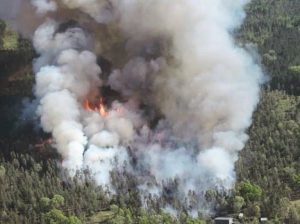Since early May, almost 400 elephants dropped dead in Okavango delta in Botswana and nobody knew why. Described as a “conservation disaster” by scientists, the deaths did not follow any particular pattern and affected individual of all ages, “with many walking in circles before dying suddenly, collapsing on their faces.”
The mystery is finally solved and cyanobacteria are to be blamed. According to officials, the deaths were caused by toxins produced by cyanobacteria in water.
Also Read | Singapore crushes massive ivory haul on eve of World Elephant Day
“Our latest tests have detected cyanobacterial neurotoxins to be the cause of deaths. These are bacteria found in water,” Mmadi Reuben of Department of Wildlife and National Parks said in a press conference on Monday. Most of the elephants were found dead near waterholes.
Reuben also said that many questions are still to be answered such as to why the toxins affected just elephants and why was it confined to a particular area. “We have a number of hypotheses we are investigating,” he added.
Also Read | Scientists warn of ‘catastrophic decline’ in wildlife due to human destruction
“Rising temperatures and intensive farming methods are fuelling an increase in algal blooms in rivers, lakes, reservoirs and seas around the world. Elephants are naive to this potential threat which makes them vulnerable,” said Niall McCann, Conservation Director for the National Park Rescue organization.
The Department also said that most of the surviving elephants have fled from the region.
Recently, Botswana’s neighbour Zimbabwe also had reported similar elephant deaths owing to a bacterial infection. With 130,000 African Elephants, Botswana is home to the world’s largest elephant population.







